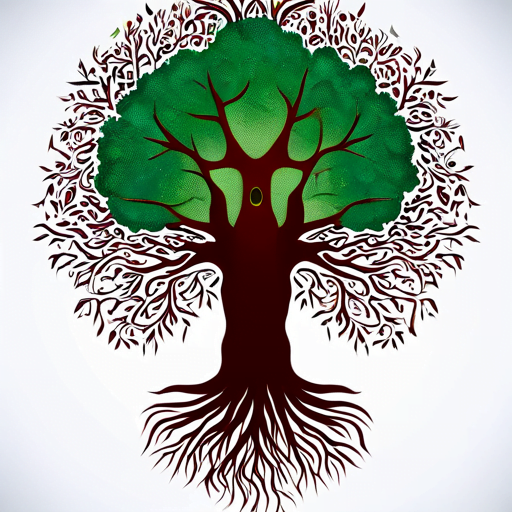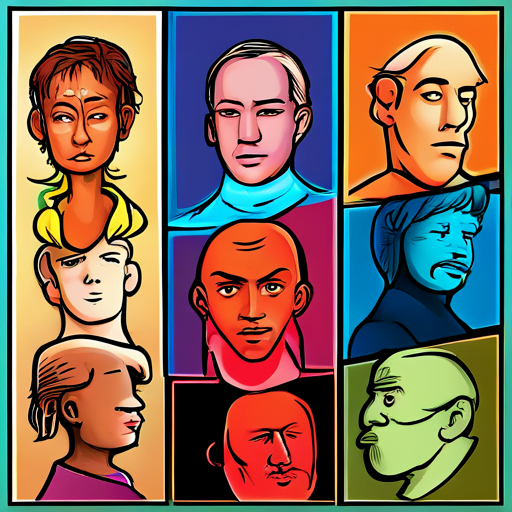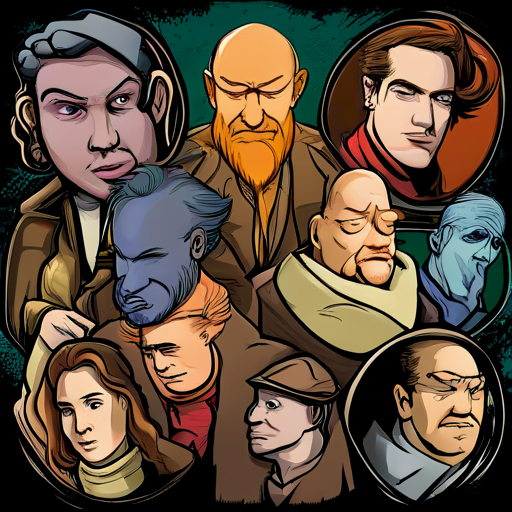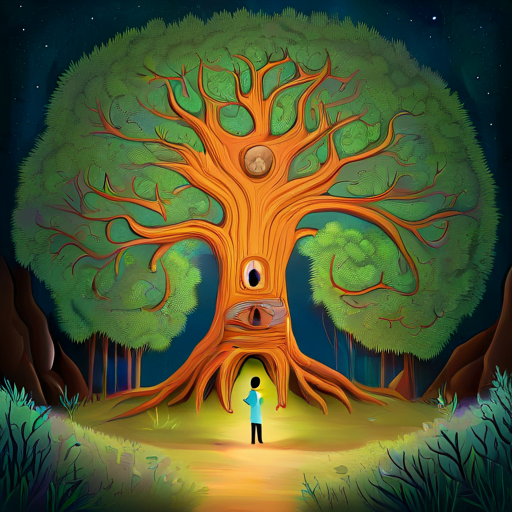If you’ve ever read a book, watched a movie, or listened to a story, you’ve likely come across archetypes. These are the universal characters, symbols, and motifs that recur throughout literature and other forms of storytelling. Archetypes are used to convey certain themes, emotions, and ideas to the audience, and they can be found in works of fiction, non-fiction, and even in our everyday lives.
In this article, you’ll explore the fascinating world of archetypes and learn how they have been used in literature throughout history. You’ll discover the most common archetypes found in literature, and see examples of how they have been used to create memorable characters and stories.
You’ll also learn why archetypes are important to the storytelling process, and how they can help you better understand the world around you. So, sit back, grab a book, and get ready to explore the fascinating world of archetypes in literature.
Table of Contents
Origins of Archetypes in Literature

Let’s delve into how archetypes came to be a part of the stories we love. Archetypes have been present in literature for centuries, tracing back to ancient Greek mythology.
The concept of archetypes can be attributed to the philosopher Plato, who believed that the human psyche is composed of three parts: the rational, the irrational, and the spiritual. These three parts correspond to three archetypes: the ego, the shadow, and the self.
In literature, archetypes serve as universal symbols that represent common human experiences and emotions. These symbols can be found in the characters, plot, and themes of stories.
For example, the hero archetype is often portrayed as a character who embarks on a journey to overcome obstacles and defeat evil, representing the human desire for growth and achievement. The villain archetype, on the other hand, represents the human desire for power and control.
By using archetypes in literature, authors can create relatable and timeless stories that resonate with readers across cultures and time periods.
Most Common Archetypes Found in Literature

You’ll discover the most commonly recurring characters that appear in stories, films, and novels. These characters are known as archetypes, and they’ve been used in literature for centuries.
The most common archetypes found in literature are the Hero, the Villain, the Mentor, the Trickster, and the Damsel in Distress. The Hero is the protagonist of the story and is often on a quest or mission to achieve a goal. The Villain is the antagonist and is often the obstacle that the Hero must overcome.
The Mentor is a wise and experienced character who provides guidance and support for the Hero. The Trickster is a character who uses cunning and deception to achieve their goals. The Damsel in Distress is a vulnerable character who needs to be rescued by the Hero.
These archetypes have been used in countless stories and have become ingrained in our literary culture.
Examples of Archetypes in Literature

The prevalence of archetypes in literary works is evident through the recurring appearances of characters such as the Hero, the Villain, the Mentor, the Trickster, and the Damsel in Distress, each serving a unique purpose in advancing the plot.
For instance, in J.K. Rowling’s Harry Potter series, Harry is the Hero archetype, as he embarks on a journey to defeat the villainous Lord Voldemort. Meanwhile, Voldemort himself is the ultimate Villain archetype, representing the epitome of evil and serving as the major obstacle for Harry to overcome.
Another example of archetypes in literature can be found in J.R.R. Tolkien’s The Lord of the Rings trilogy. Gandalf serves as the Mentor archetype, guiding Frodo and the other members of the Fellowship on their journey to destroy the One Ring. Meanwhile, Gollum embodies the Trickster archetype, playing a pivotal role in the plot by leading Frodo and Sam to Mount Doom, but ultimately betraying them in an attempt to reclaim the Ring for himself.
These examples demonstrate how archetypes can add depth and complexity to a story, allowing readers to easily recognize and connect with certain characters while also providing a framework for the narrative to unfold.
The Importance of Archetypes in Literature

You might not realize it, but the importance of archetypes in literature cannot be overstated. These archetypes serve as universal symbols that are recognized by readers across cultures and time periods. They tap into our collective unconscious and resonate with us on a subconscious level, allowing us to better understand ourselves and the world around us.
Archetypes also help to create a sense of familiarity and comfort for readers. When we encounter a hero, a mentor, or a trickster in a story, we know exactly what to expect based on our previous experiences with these archetypes. This allows us to fully immerse ourselves in the story and focus on the deeper messages and themes it conveys.
Without archetypes, literature would lack the universal appeal that makes it such a valuable tool for personal growth and understanding.
Frequently Asked Questions
How do authors determine which archetype to use in their writing?
To determine which archetype to use in their writing, authors often consider the message they want to convey and the type of story they want to tell. They may also take into account their audience and what archetypes may resonate with them.
Furthermore, authors may draw on their own personal experiences and beliefs to choose an archetype that aligns with their own values and worldview. Ultimately, the decision to use a particular archetype is a deliberate choice made by the author to enhance the themes and motifs of their work and create a deeper, more resonant reading experience for their audience.
Are archetypes only found in written literature or can they also be found in other forms of storytelling such as film or theater?
You may be surprised to learn that archetypes aren’t only found in written literature, but also in other forms of storytelling such as film and theater.
In fact, many popular movies and plays use archetypes to create memorable characters and storylines. For example, the hero archetype is often seen in action movies where the main character must overcome challenges and save the day. Similarly, the villain archetype is often portrayed as a power-hungry antagonist who will stop at nothing to achieve their goals.
By using archetypes, writers and filmmakers can tap into universal human experiences and emotions, making their stories more relatable and impactful for audiences.
Can archetypes change or evolve over time in response to cultural shifts or societal changes?
Archetypes can change and evolve over time in response to cultural shifts or societal changes. As society progresses, the way we perceive and relate to certain archetypes may also change.
For example, the archetype of the hero may have looked very different in the past compared to how it’s portrayed today. As society’s values and beliefs change, so do the archetypes that resonate with us.
Whether it’s in literature, film, theater, or any other form of storytelling, archetypes will continue to evolve and adapt to fit the needs and desires of the audience.
How do archetypes contribute to the overall meaning or message of a literary work?
When reading a work of literature, you may find yourself drawn to certain recurring character types or symbols that seem to hold a deeper meaning. These are known as archetypes, and they can play a crucial role in the overall message or theme of a literary work.
For example, a hero archetype might represent bravery and selflessness, while a shadow archetype might symbolize the darker impulses that we all struggle with. By using archetypes in their writing, authors can tap into universal themes and ideas that resonate with readers across time and culture.
Whether consciously or unconsciously, archetypes help to shape the way we interpret and understand the stories we encounter.
Are there any negative consequences or limitations to relying too heavily on archetypes in literature?
If you rely too heavily on archetypes in your writing, you risk falling into the trap of cliché and predictability.
While archetypes can be a useful tool for creating relatable characters and universal themes, overusing them can result in flat, one-dimensional characters and a lack of originality.
It’s important to use archetypes as a starting point for developing your characters and their relationships, but also to add depth and complexity to their personalities and experiences.
By balancing the use of archetypes with unique, individual traits and experiences, you can create a more engaging and memorable story.
Conclusion
So, you’ve learned about the origins of archetypes in literature, the most common archetypes found in literature, and examples of archetypes in literature.
But why are archetypes so important in literature? Archetypes provide a universal language that readers can understand and relate to. They tap into our collective unconscious and allow us to connect with characters and stories on a deeper level.
Archetypes also help authors create more complex and dynamic characters by providing a framework for their development. By understanding archetypes, readers can gain a deeper appreciation for the themes and messages in literature.
So, next time you pick up a book, keep an eye out for archetypes and see how they enhance your reading experience.
